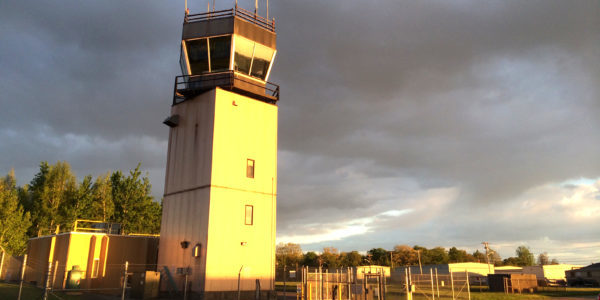I didn’t learn to fly at a towered field, and I have no idea what percentage of the aviation community learns at towered vs. non-towered. However, the last 6 out of my 12 years of teaching occurred almost exclusively at towered fields. But when I first learned to fly, I remember the stage of training where we leave the familiarity and comfort of home and have to talk for the first time to… an AIR TRAFFIC CONTROLLER.
All of the tension of trying not to bust airspace or land on the wrong runway PALES in comparison to the stress one feels just trying to avoid sounding silly on the radio. Universally, there’s something about squeezing that Push-to-Talk and transmitting our voice out there for everyone on frequency to hear that twists our stomach up in knots. If this describes you, have no fear because… you’re not alone.
One of the most important experiences an instructor can give their student would be to meet the folks on the other end of that radio. Whether you’re already at a towered field, or have to fly (or drive) to one, most towers have a phone number to arrange a visit. You can also just use the radio to contact them. “Hi tower, do you have time for a tower visit with me and my student?” Almost every time, they can accommodate the request.
Once in the tower, you’ll be treated to a fantastic view: enough displays and switches to make your eyes bug out, and a different perspective on flight operations than you’ve ever seen. But before you start posting to Instagram (tag us at @SpreadAviation), be sure to ask about cell phone and photography policy, because they’ve got rules as well (FAA Order 7110.65). You may just have to take those pictures with your memory.
If they’re not too busy or low on staff, be sure to ask questions: “How does the radar work?”, “What happens if the power goes out?”, and “What does this button do?” are just a couple that come to mind. This is also an opportunity to learn about the person who’s on the other side of that radio. They’re not that scary!
In my time flying, I have needed that not-scary person to help resolve situations in the airplane I was flying. From lost communications, traffic avoidance, and stuck landing gear, to catastrophic engine failure, there was always someone on the other side of that radio willing and able to help. Air Traffic Controllers enhance safety in busy airspaces. The movie “Sully” has some great scenes highlighting the coordination between ATC facilities to help Flight 1549 land successfully on the Hudson. Though the main priority was to try and find an airport, ATC even went so far as to ask other traffic if they had the airliner in sight.
It helps us all to always remember that there’s another human on the other end of that radio. So the next time you’re in the area, give the tower a call. Go up and say “hi!” And who knows, you might even make a friend. (Go Browns!)

